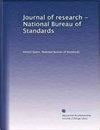Accuracy in the Determination of Chlorinated Dibenzo-p-Dioxins and Dibenzofurans in Environmental Samples
Journal of research of the National Bureau of Standards
Pub Date : 1988-05-01
DOI:10.6028/jres.093.030
引用次数: 0
Abstract
The analytical chemist involved in industrial trace analysis is frequently confronted with many varied problems. Programs to produce acceptable data can be divided into two classes depending upon the level of quality assurance that is required. Frequently, unvalidated analytical procedures can be used to generate data for screening programs or process control. On the other hand, validated methods with rigorous quality assurance guidelines are absolutely necessary for work involving product specifications, industrial hygiene, or regulatory matters. When the analyst is asked to develop a trace analytical method, he must determine the end-use of the data. There are many parameters which must be factored into the analytical method. The analyst would like to build into the method the highest achievable sensitivity, accuracy, and reliability; and the customer wants the lowest cost and fastest analysis time possible. We can see then, from a practical viewpoint, the method development begins with a series of compromises. When implemented properly, these compromises can improve the overall quality of the method. The American Chemical Society has published "Principles of Environmental Analysis" [Anal. Chem. 55, 2210 (1983)] to aid in designing analytical measurements on environmental samples. The relationship between the number of samples necessary to obtain data within a defined acceptable error, and the standard deviation of the method, is shown by the equation:环境样品中氯代二苯并对二恶英和二苯并呋喃测定的准确性
从事工业痕量分析的分析化学家经常面临各种各样的问题。根据所要求的质量保证水平,可将产生可接受数据的程序分为两类。通常,未经验证的分析方法可用于生成筛选程序或过程控制的数据。另一方面,具有严格质量保证指导方针的验证方法对于涉及产品规格,工业卫生或监管事项的工作是绝对必要的。当要求分析人员开发跟踪分析方法时,他必须确定数据的最终用途。在分析方法中必须考虑到许多参数。分析师希望在方法中构建可实现的最高灵敏度、准确性和可靠性;客户想要最低的成本和最快的分析时间。我们可以看到,从实际的角度来看,方法开发始于一系列的妥协。如果实现得当,这些折衷可以提高方法的整体质量。美国化学会出版了《环境分析原理》。化学,55,2210(1983)],以帮助设计环境样品的分析测量。在定义的可接受误差范围内获得数据所需的样本数与方法的标准偏差之间的关系如式所示:
本文章由计算机程序翻译,如有差异,请以英文原文为准。
求助全文
约1分钟内获得全文
求助全文

 求助内容:
求助内容: 应助结果提醒方式:
应助结果提醒方式:


